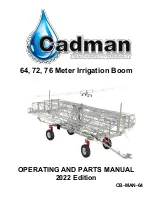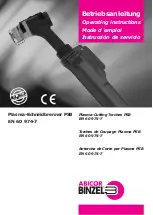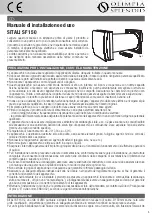
507
Thermo AC/DC
5 Troubleshooting
5.8
Individual component tests
Individual components can be basically tested using
visual inspection or manual electrical testing.
5.8.1 General visual inspection
•
Inspect components for damages (cracks, deforma-
tion, leaks, discolourations, etc.) and replace as
needed.
•
Inspect plugs and cables for corrosion, contact and
crimp errors and repair as needed.
•
Check plug contacts for corrosion and tight fit. Repair
as needed.
•
Inspect warning placards / replace if absent or illegible
•
Check that all cables and lines are sufficiently secured
with cable ties. In case of insufficient fixation or dama-
ged cable ties, retrofit or replace them.
5.8.2 Heat exchanger visual inspection
•
Inspect the heat exchanger interior for damage,
corrosion, sooting and deposits.
•
Inspect heat exchanger for outer damage, corrosion,
moisture, deformations, deposits, discolourations,
etc.
ATTENTION:
Soot and deposits in the heat exchanger must be
removed, as they impact the heat transfer to the
coolant.
Severe outer deformations may impact coolant flow.
5.8.3 Voltage converter check or visual
inspection
•
Inspect voltage converter for damage (cracks, defor-
mation, discoloration etc.) and if required replace
small distribution board.
•
Inspect wires for corrosion, contact and crimp errors
etc. and replace if required.
5.8.4 Load contactor check or visual inspection
•
Inspect load contactor for damage (cracks, deforma-
tion, discoloration etc.) and if required replace small
distribution board.
•
Inspect wires for corrosion, contact and crimp errors
etc. and replace if required.
5.8.5 Heating cartridges check or visual
inspection
•
Inspect heating cartridge (from outside) for damage
(cracks, deformation, discoloration etc.) and replace if
required.
•
Inspect wires for corrosion, contact and crimp errors
etc., replace heating cartridge if required.
5.8.6 Check of the temperature guards (control
thermostat and temperature limiter)
5.8.6.1 Control thermostat check
NOTE:
The control thermostat must be screwed in tight (by hand)
and the protective cap must be installed. The cable must
not be damaged.
Check
During the test with a digital multimeter CAT III, the control
thermostat is to be tested for continuity.
The control thermostat is connected to pins 3 and 4 of the
temperature sensor connector (see
Switching temperature:
•
opens at 75 ± 3°C
•
closes at 68 ± 5°C
At room temperature the contact is closed. When it heats
to above the upper switching point, it is opened.
Fig. 501 Temperature sensor connector
Pin 3 & 4
Pin 1 & 2
Temperature limiter
Control thermostat
Summary of Contents for Thermo AC 070
Page 47: ...memos...
















































